The Frontotemporal Disorders Treatment Market is expected to register a CAGR of 5.0% from 2025 to 2031, with a market size expanding from US$ XX million in 2024 to US$ XX Million by 2031.
The report presents an analysis based on drug class (antidepressants (selective serotonin reuptake inhibitors, serotonin and noradrenaline reuptake inhibitors), antipsychotics (risperidone , quetiapine), others). The report is segmented by disease indication (frontotemporal dementia, primary progressive aphasia, and movement disorders) and based on route of administration (oral, parenteral). The report further provides analysis based on distribution channel (hospital pharmacy, online pharmacy, retail pharmacy). The global analysis is further broken-down at regional level and major countries. The market size and forecast at global, regional, and country levels for all the key market segments are covered under the scope. The report offers the value in USD for the above analysis and segments. The report provides key statistics on the market status of the key market players and offers market trends and opportunities.
Purpose of the Report
The report Frontotemporal Disorders Treatment Market by The Insight Partners aims to describe the present landscape and future growth, top driving factors, challenges, and opportunities. This will provide insights to various business stakeholders, such as:
- Technology Providers/Manufacturers: To understand the evolving market dynamics and know the potential growth opportunities, enabling them to make informed strategic decisions.
- Investors: To conduct a comprehensive trend analysis regarding the market growth rate, market financial projections, and opportunities that exist across the value chain.
- Regulatory bodies: To regulate policies and police activities in the market with the aim of minimizing abuse, preserving investor trust and confidence, and upholding the integrity and stability of the market.
Frontotemporal Disorders Treatment Market Segmentation
Drug Class
- Antidepressants
- Antipsychotics
Disease Indication
- Frontotemporal Dementia
- Primary Progressive Aphasia
- Movement Disorders
Route of Administration
- Oral
- Parenteral
Distribution Channel
- Hospital Pharmacy
- Online Pharmacy
- Retail Pharmacy
You will get customization on any report - free of charge - including parts of this report, or country-level analysis, Excel Data pack, as well as avail great offers and discounts for start-ups & universities
Frontotemporal Disorders Treatment Market: Strategic Insights
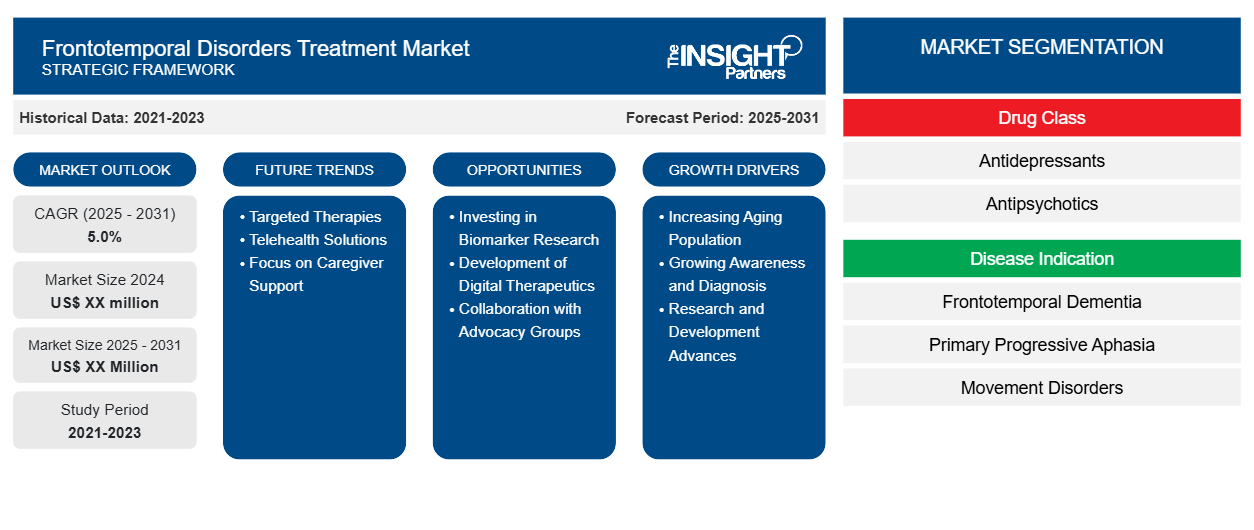
-
Get Top Key Market Trends of this report.This FREE sample will include data analysis, ranging from market trends to estimates and forecasts.
Frontotemporal Disorders Treatment Market Growth Drivers
- Increasing Aging Population: The increasing aging population globally is a major driver for the frontotemporal disorders treatment market. As age is a significant risk factor for these neurodegenerative disorders, more individuals are being diagnosed. This rising incidence necessitates a greater focus on effective treatment options and supportive care, creating a growing demand for therapeutic interventions.
- Growing Awareness and Diagnosis: There is a rising awareness among healthcare professionals and the public regarding frontotemporal disorders. Improved diagnostic tools and criteria are enabling earlier diagnosis. As healthcare providers become more knowledgeable about these conditions, they are more likely to refer patients for specialized treatment, thus expanding the treatment market and improving patient care.
- Research and Development Advances: Significant advancements in research related to frontotemporal disorders are driving the market. Increased funding and focus on understanding the underlying mechanisms of these disorders are leading to the development of innovative therapies. Companies are investing in targeted treatments and novel approaches, which will likely enhance the quality of life for patients and expand market opportunities.
Frontotemporal Disorders Treatment Market Future Trends
- Targeted Therapies: The development of targeted therapies is an emerging trend in the treatment of frontotemporal disorders. Research is increasingly focused on identifying specific molecular targets associated with these conditions. Targeted treatments can provide more effective and personalized options for patients, improving outcomes and minimizing side effects, thus reshaping the treatment landscape.
- Telehealth Solutions: The integration of telehealth solutions into the management of frontotemporal disorders is gaining momentum. Virtual consultations and remote monitoring can enhance patient access to care, particularly in underserved areas. This trend enables ongoing support for patients and caregivers while optimizing treatment plans, fostering better management of these complex neurodegenerative conditions.
- Focus on Caregiver Support: There is a growing recognition of the importance of caregiver support in managing frontotemporal disorders. As family members often bear the burden of care, treatment approaches are increasingly incorporating caregiver education and resources. This trend emphasizes the holistic management of patients, addressing both their needs and those of their caregivers, leading to improved quality of life.
Frontotemporal Disorders Treatment Market Opportunities
- Investing in Biomarker Research: There is a unique opportunity for companies to invest in biomarker research related to frontotemporal disorders. Identifying reliable biomarkers can facilitate early diagnosis and monitoring, leading to more effective treatment strategies. This focus on precision medicine can position companies as leaders in the field while addressing unmet clinical needs.
- Development of Digital Therapeutics: The rise of digital therapeutics offers a unique opportunity in the frontotemporal disorders treatment market. Creating mobile apps and online platforms focused on cognitive training and symptom management can enhance patient engagement and support. These innovative solutions can complement traditional therapies, providing additional resources for patients and caregivers.
- Collaboration with Advocacy Groups: Partnering with advocacy groups and patient organizations can create unique opportunities for pharmaceutical companies. Collaborations can enhance awareness, facilitate clinical trial recruitment, and provide valuable insights into patient needs. By working together, stakeholders can advance research efforts and improve treatment strategies for frontotemporal disorders.
Frontotemporal Disorders Treatment Market Regional Insights
The regional trends and factors influencing the Frontotemporal Disorders Treatment Market throughout the forecast period have been thoroughly explained by the analysts at The Insight Partners. This section also discusses Frontotemporal Disorders Treatment Market segments and geography across North America, Europe, Asia Pacific, Middle East and Africa, and South and Central America.
Frontotemporal Disorders Treatment Market Report Scope
| Report Attribute | Details |
|---|---|
| Market size in 2024 | US$ XX million |
| Market Size by 2031 | US$ XX Million |
| Global CAGR (2025 - 2031) | 5.0% |
| Historical Data | 2021-2023 |
| Forecast period | 2025-2031 |
| Segments Covered |
By Drug Class
|
| Regions and Countries Covered |
North America
|
| Market leaders and key company profiles |
|
Frontotemporal Disorders Treatment Market Players Density: Understanding Its Impact on Business Dynamics
The Frontotemporal Disorders Treatment Market is growing rapidly, driven by increasing end-user demand due to factors such as evolving consumer preferences, technological advancements, and greater awareness of the product's benefits. As demand rises, businesses are expanding their offerings, innovating to meet consumer needs, and capitalizing on emerging trends, which further fuels market growth.
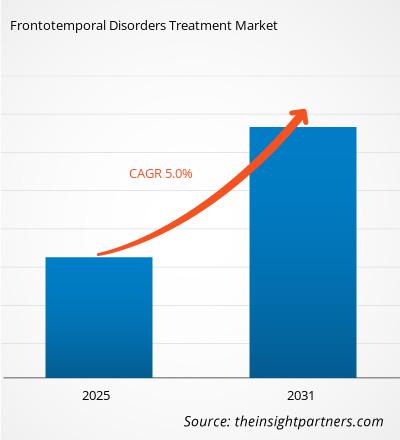
- Get the Frontotemporal Disorders Treatment Market top key players overview
Key Selling Points
- Comprehensive Coverage: The report comprehensively covers the analysis of products, services, types, and end users of the Frontotemporal Disorders Treatment Market, providing a holistic landscape.
- Expert Analysis: The report is compiled based on the in-depth understanding of industry experts and analysts.
- Up-to-date Information: The report assures business relevance due to its coverage of recent information and data trends.
- Customization Options: This report can be customized to cater to specific client requirements and suit the business strategies aptly.
The research report on the Frontotemporal Disorders Treatment Market can, therefore, help spearhead the trail of decoding and understanding the industry scenario and growth prospects. Although there can be a few valid concerns, the overall benefits of this report tend to outweigh the disadvantages.
Frequently Asked Questions
Who are the prominent players in frontotemporal disorders treatment market?
Eli Lilly and Co.
AstraZeneca
Novartis International AG
Roche Holding AG
Pfizer Inc.
TauRx Pharmaceuticals
Acumen Pharmaceuticals
Genentech (Roche)
Alexion Pharmaceuticals
Which is the fastest growing region in frontotemporal disorders treatment market?
Which region accounts for highest revenue share frontotemporal disorders treatment market?
What years does this frontotemporal disorders treatment market cover?
At what CAGR the frontotemporal disorders treatment market is projected to grow?
Major driver boosting the frontotemporal disorders treatment market growth?
- Historical Analysis (2 Years), Base Year, Forecast (7 Years) with CAGR
- PEST and SWOT Analysis
- Market Size Value / Volume - Global, Regional, Country
- Industry and Competitive Landscape
- Excel Dataset
Recent Reports
Testimonials
Reason to Buy
- Informed Decision-Making
- Understanding Market Dynamics
- Competitive Analysis
- Identifying Emerging Markets
- Customer Insights
- Market Forecasts
- Risk Mitigation
- Boosting Operational Efficiency
- Strategic Planning
- Investment Justification
- Tracking Industry Innovations
- Aligning with Regulatory Trends












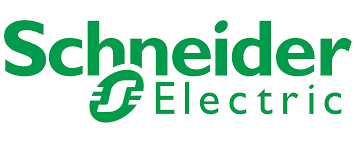


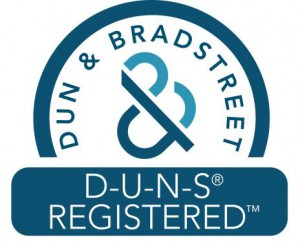

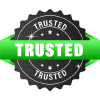



 Get Free Sample For
Get Free Sample For